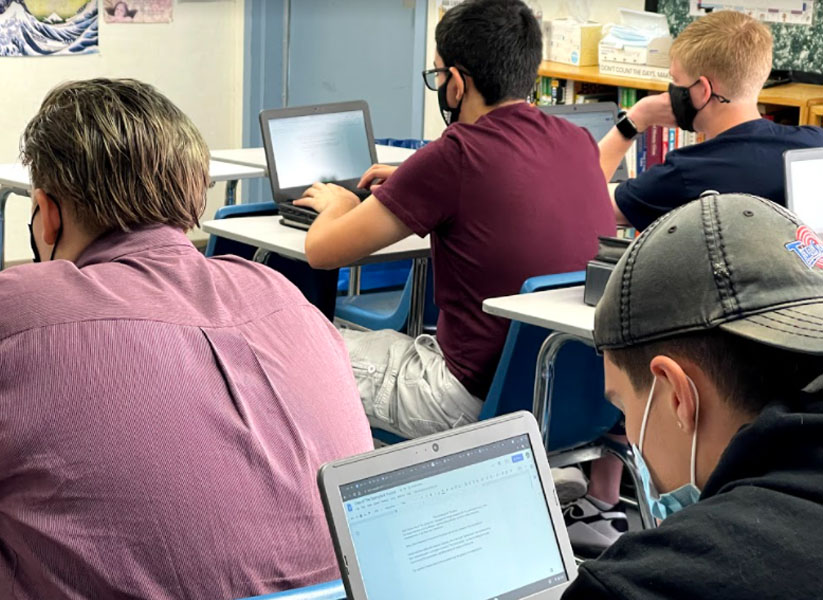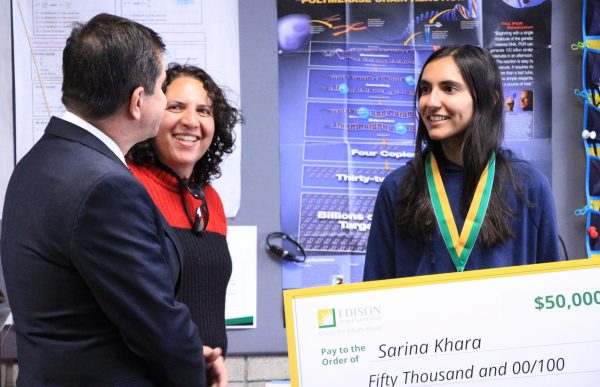1:1 Chromebook policy empowers learning
September 7, 2021
Among numerous changes to the normal school day routine, the Burroughs Chromebook procedure is getting plenty of attention. Rather than each classroom having a cart with a class set of Chromebooks, students are now checking out personal Chromebooks at the beginning of the year like they do with textbooks.
The goal of the program is to provide equitable access to technology to all students, who are responsible for charging their Chromebooks, bringing them to school, and keeping them safe.
“It helps students learn to be responsible,” freshman Pablo Giron said. “I find having my own Chromebook very helpful. One example of this is that I can keep one Chromebook in my backpack all day instead of disconnecting a Chromebook and reconnecting each class period.”
A start-of-school survey indicates that nearly half of students say that almost all of their classes are using Chromebooks for classwork and homework.
“I find the Chromebook very helpful in keeping the order of my classwork and having a resource to use for research on classroom assignments,” said senior Elliotte Abernathy, who appreciates having a school Chromebook as she cannot currently afford one of her own.
The 1:1 program is also eliminating the need for siblings to fight over a single home computer, as one survey respondent explained.
“Well, let’s consider that most homework is now on the Chromebooks and if you are in a household with any siblings – let’s randomly say four – then otherwise completing homework would be impossible because five people all trying to use the same computer is not going to work. So I would not say it is a benefit, but rather, necessary,” concluded the senior.
The Chromebooks are also indispensable under COVID-19, eliminating the need to share computers among students and providing quarantining students the ability to stay on top of classwork and homework via Canvas.
“If you are home sick, then you can still be up to date with the material since you have the worksheets and the necessary resources to learn it,” said sophomore Levi Sutphin.
Chromebooks can also help keep students in contact with their teachers and their classmates. When a student has a question about their homework, they can contact their teacher to ask them. During a group project, students can get in contact with their partners to discuss their topics.
Most students commented on their preference for having their own Chromebook, citing their ability to personalize its tabs or taking comfort in knowing they would not be held responsible for others’ damage.
The biggest downside? Keeping the Chromebooks charged.
Both students and teachers cited this as the biggest issue they see. Some teachers have set up charging stations in their classrooms, and the Library is working with students to provide chargers to students who forget theirs (see sidebar).
Burroughs Library Clerk Janna Pearce indicates the library is signing out around 25 chargers a day and a dozen Chromebooks. Although students may be issued demerits for excessive borrowing, the goal is to keep the technology in students’ hands so they can do their work.
“Most students have adapted to the routine,” said English Department Chair Susie Burgess.”I have a few who consistently need to charge their Chromebooks during class, but they do so efficiently without disrupting what we are doing.”







